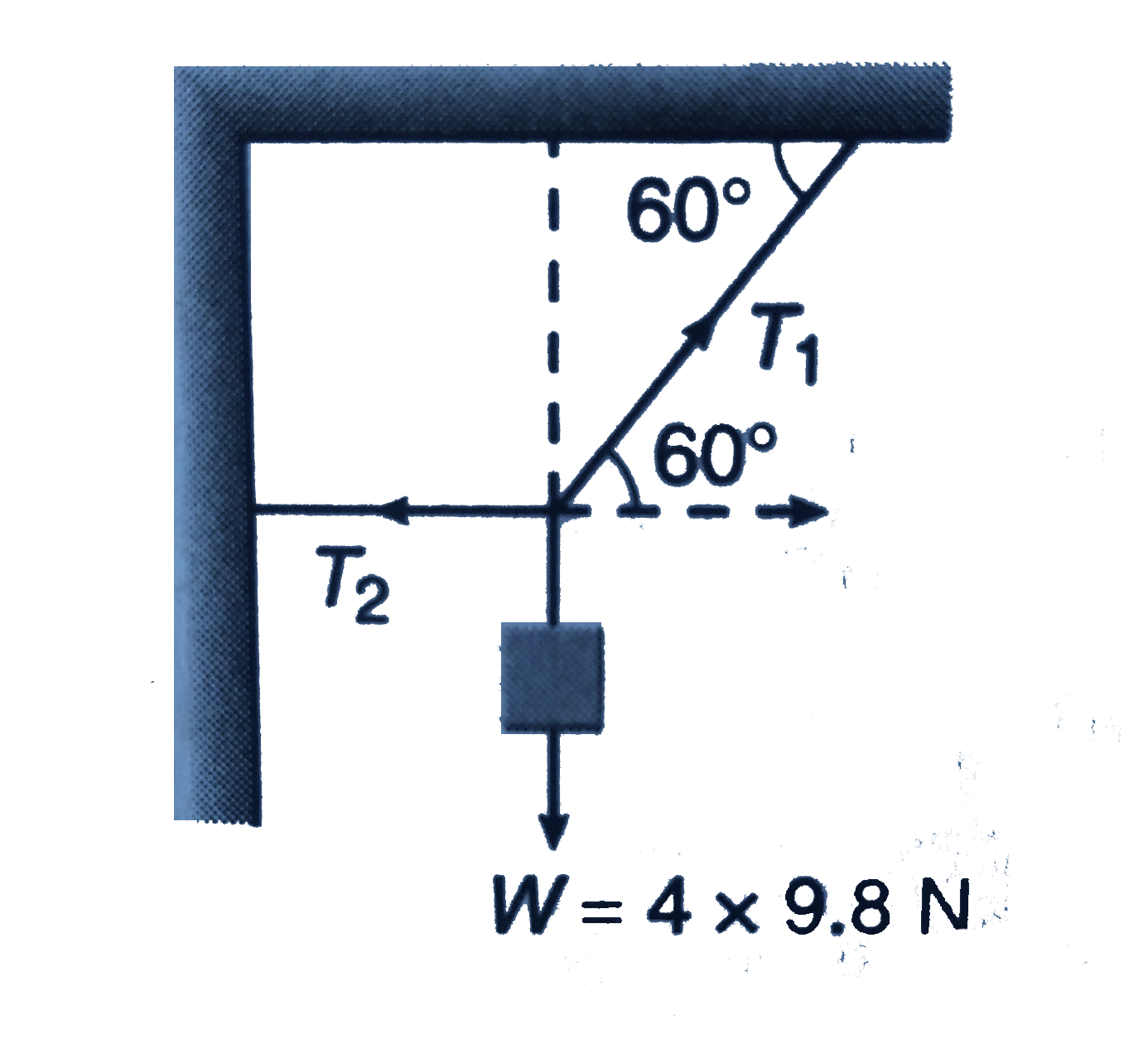Four blocks of the same mass m connected by cords are pulled by a force F on a smooth horizontal surface as shown in Determine the tensions T1T2 and T3 in the cords.
To solve the problem of finding the tensions T1,T2, and T3 in the cords connecting four blocks of mass m being pulled by a force F on a smooth horizontal surface, we can follow these steps:
Step 1: Understand the System
We have four blocks of mass m connected by cords. When a force F is applied to the first block, all blocks will accelerate together with the same acceleration A.
Step 2: Calculate the Total Mass
The total mass of the system is:
M=4m
Step 3: Apply Newton's Second Law to the Entire System
According to Newton's second law:
F=M⋅A
Substituting the total mass:
F=4m⋅A
From this, we can solve for the acceleration A:
A=F4m
Step 4: Analyze the Forces on the Last Block
For the last block (Block 4), the only force acting on it is the tension T3:
T3=m⋅A
Substituting for A:
T3=m⋅F4m=F4
Step 5: Analyze the Forces on the Third Block
For the third block (Block 3), the forces acting on it are T2 (pulling it forward) and T3 (pulling it backward):
T2−T3=m⋅A
Substituting for A and T3:
T2−F4=m⋅F4m
This simplifies to:
T2−F4=F4
Thus:
T2=F4+F4=F2
Step 6: Analyze the Forces on the Second Block
For the second block (Block 2), the forces acting on it are T1 (pulling it forward) and T2 (pulling it backward):
T1−T2=m⋅A
Substituting for A and T2:
T1−F2=m⋅F4m
This simplifies to:
T1−F2=F4
Thus:
T1=F2+F4=2F4+F4=3F4
Summary of Tensions
The tensions in the cords are:
T1=3F4,T2=F2,T3=F4
We have four blocks of mass m connected by cords. When a force F is applied to the first block, all blocks will accelerate together with the same acceleration A.
The total mass of the system is:
M=4m
According to Newton's second law:
F=M⋅A
Substituting the total mass:
F=4m⋅A
From this, we can solve for the acceleration A:
A=F4m
For the last block (Block 4), the only force acting on it is the tension T3:
T3=m⋅A
Substituting for A:
T3=m⋅F4m=F4
For the third block (Block 3), the forces acting on it are T2 (pulling it forward) and T3 (pulling it backward):
T2−T3=m⋅A
Substituting for A and T3:
T2−F4=m⋅F4m
This simplifies to:
T2−F4=F4
Thus:
T2=F4+F4=F2
For the second block (Block 2), the forces acting on it are T1 (pulling it forward) and T2 (pulling it backward):
T1−T2=m⋅A
Substituting for A and T2:
T1−F2=m⋅F4m
This simplifies to:
T1−F2=F4
Thus:
T1=F2+F4=2F4+F4=3F4
The tensions in the cords are:
T1=3F4,T2=F2,T3=F4
Similar Questions
Figure shows four blocks that are being pulled along a smooth horizontal surface.The masses of the blocks and tension in one cord are given.The pulling force F is
View SolutionThree blocks connected together by strings are pulled along a horizontal surface by applying force F. If T_(3)=36 N , What is tension T_(2) ?
View SolutionDetermine the tensions T1 and T2 in the string as shown in figure.

View SolutionFour blocks of the same mass m connected by cords are pulled by a force F on a smooth horizontal surface as shown in Determine the tensions T_1 ,T_2 and T_3 in the cords.
View SolutionDetermine the tensions T1 and T2 in the string as shown in figure.

View SolutionIn the arrangement shown in figure in which four blocks are suspended by cords . The top card loops over a frictionless pulley and pulls with a force of magnitude 98 N on the wall to which is attached . If the tensions in the shorter cords are T_(1) = 58.8 N, T_(2) = 49. 0 and T_(3) = 9.8 N,
View SolutionFour blocks of the same mass m connected by cords are pulled by a force F=100 N on a smooth horizontal surface as shown in Determine the tensions T_1 ,T_2 and T_3 in the cords.
View SolutionFour blocks of the same mass m connected by cords are pulled by a force F on a smooth horizontal surface as shown in Determine the tensions T1,T2 and T3 in the cords.
View Solution
